Means of air defense of the Soviet fleet during the war
Towards the end of World War I aviation already posed a serious threat to warships. To defend against an air enemy in the arsenal of the Russian Imperial fleet several samples of anti-aircraft guns of domestic and foreign production were taken.
Initially, anti-aircraft weapons available in significant quantities were reworked for anti-aircraft fire: the Hotchkiss X-mm mm millimeters, the Nordenfeld X-mm mm guns, and Kane's 47-mm guns.
Later, specially designed Lender semi-automatic anti-aircraft guns of Lender began to be installed on ship decks. 1914 / 15.
At the request of the Naval Department, the elevation angle of the tools produced by the Putilov factory was increased to + 75 °. The gun had good characteristics for its time: combat rate of fire 10-12 rds / min, range to 7000 m, reachability up to 4000 m
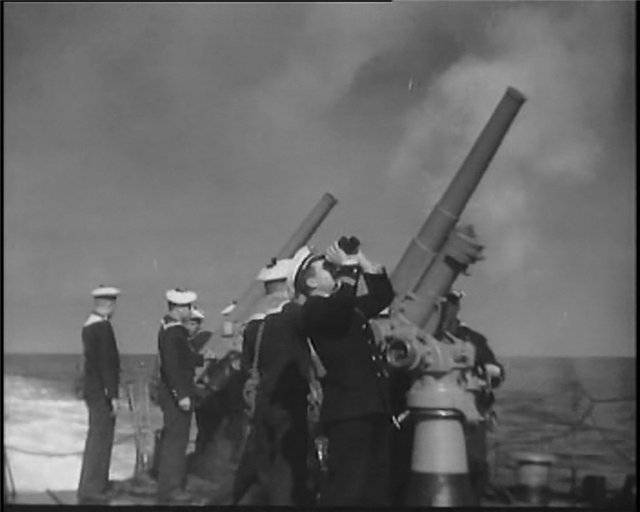
Also, the thrust 40-mm automatic Vickers anti-aircraft guns and 37-mm Maxim automatic anti-aircraft guns produced by the Obukhov plant were purchased in the UK. By the end of 1916, forty 40-mm Vickers guns were available in the Baltic and Black Sea fleets.
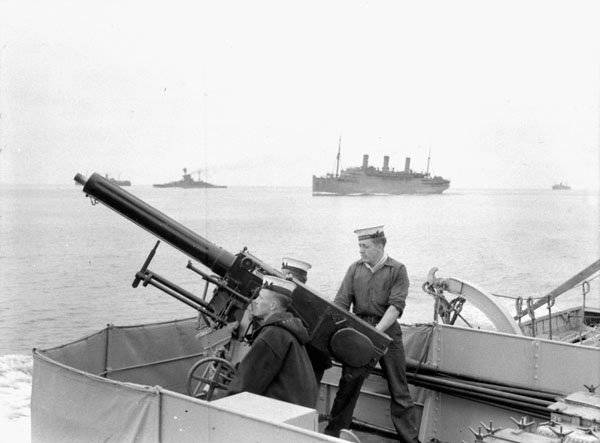
Both systems had a similar design. Installations could conduct a circular fire, with an elevation from —5 to + 80 °. Food - from the tape on the 25 cartridges. The cartridges were loaded with fragmentation shells with a 8- or 16-second distance tube. Firing Rate — 250-300 rds / min. Anti-aircraft guns of these types were difficult and expensive to manufacture, had a low reliability.
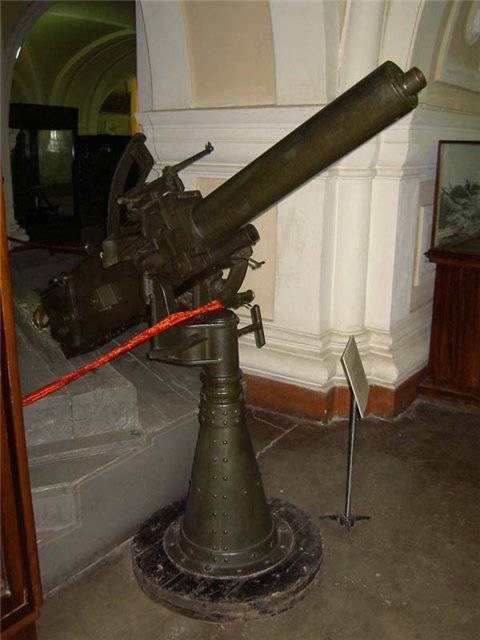
Shortly after the end of the Civil War, our fleet was left without anti-aircraft guns. For almost 20 years, the basis of the air defense of the ships was 76-mm guns and 7,62-mm machine guns.
In the 30-s in the framework of military-technical cooperation with Germany, documentation, semifinished items and operating samples of 20-mm and 37-mm anti-aircraft guns were obtained. After that, it was decided to launch them into mass production at the plant No. XXUMX in the Moscow Region. But our industry has failed to master their mass production.
As a temporary measure, the 1934-mm semi-automatic 45-K universal gun was adopted for use in the 21 year. In fact, it was an 45-mm anti-tank gun mounted on a marine machine.
In the absence of other anti-aircraft guns, the 21-K guns were installed on all classes of ships of the Soviet fleet - from patrol boats and submarines to cruisers and battleships. This tool absolutely did not satisfy the sailors as anti-aircraft. For this, it had a low rate of fire (25 shots per minute) and the absence of a remote fuse on the projectiles, so that the target could only be hit by a direct hit (which was highly unlikely). For shooting at sea and coastal targets, the weapon was thin. According to its characteristics, it almost corresponded to Hotchkiss 47-mm gun, which was released in 1885 year.

Despite the fact that this gun did not meet the requirements of anti-aircraft defense at all, due to the cessation of work on a more advanced anti-aircraft gun, 21-K was produced during the Great Patriotic War, as well as after its completion. In total, more than 4000 such guns were produced.
In 1936, the naval 76-mm anti-aircraft gun 34-K entered service. The prototype of this gun mount was the German field anti-aircraft semi-automatic 75-mm cannon manufactured by Rheinmetall, the production license of which was obtained by the Soviet Union at the beginning of 30-s, which established production of 3-K army anti-aircraft gun on its basis. Before the end of production in 1942, around 250 guns were built at the Kalinin plant.
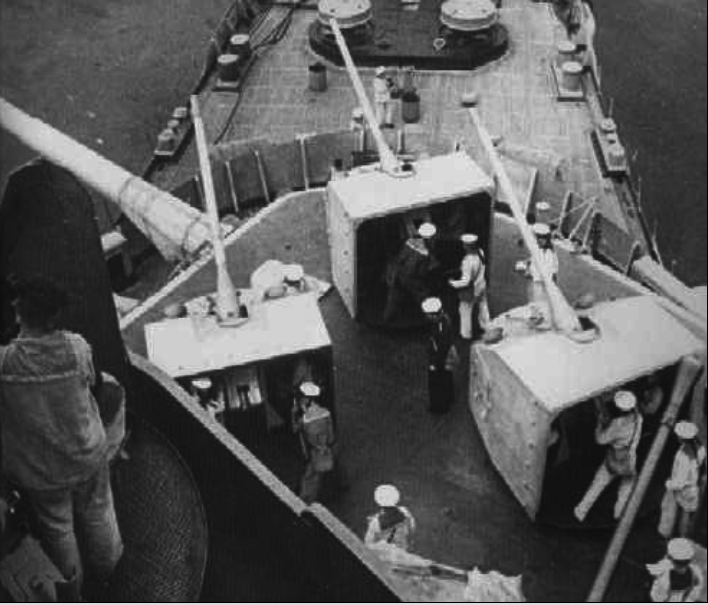
Shortly before the outbreak of the war, a very successful 12,7-mm DShK machine gun was adopted.
The DShK machine gun was mounted on a marine tumba stationary installation consisting of a base with a rotating bollard, a swivel head for attaching a machine gun and a shoulder pad, and an attached butt-rest to ensure easy guidance of the machine gun when firing at fast-moving targets. Nutrition machine gun cartridges, sights and methods of firing were the same with the DShK infantry model.
By 22 June 1941 of the year in our Navy there were 830 single-barreled DShK machine guns on thumbnail installations. The very first days of the war showed the absolute superiority of DShK over 7,62-mm machine guns. Seamen were not shy about talking about the effectiveness of DShK in high spheres: “I had to remove weapons from boats that came to the base from the sea and put them on boats leaving for the sea. The experience of the war showed that the DShK machine guns in the navy gained great prestige; without them, the commanders do not want to go to sea. ”
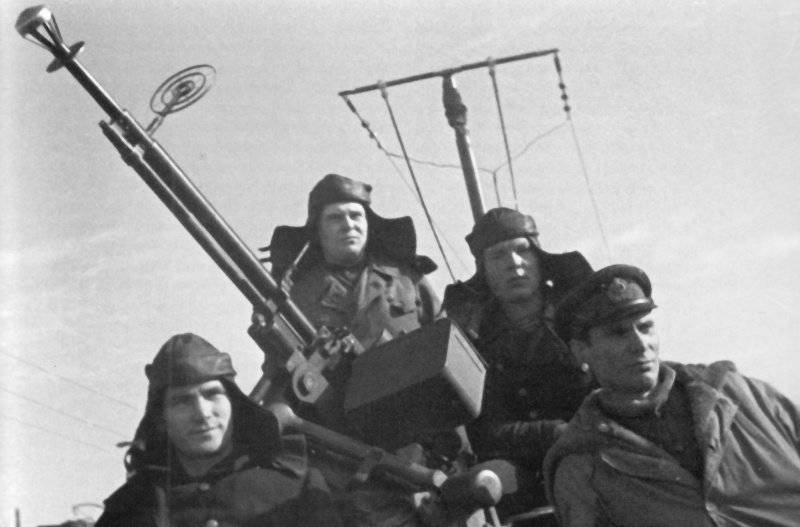
The overwhelming majority of DShKs were installed on thumbs; however, during the war, domestic designers developed many other types of DShK installations, and single and twin turret and tower installations were used on the boats.
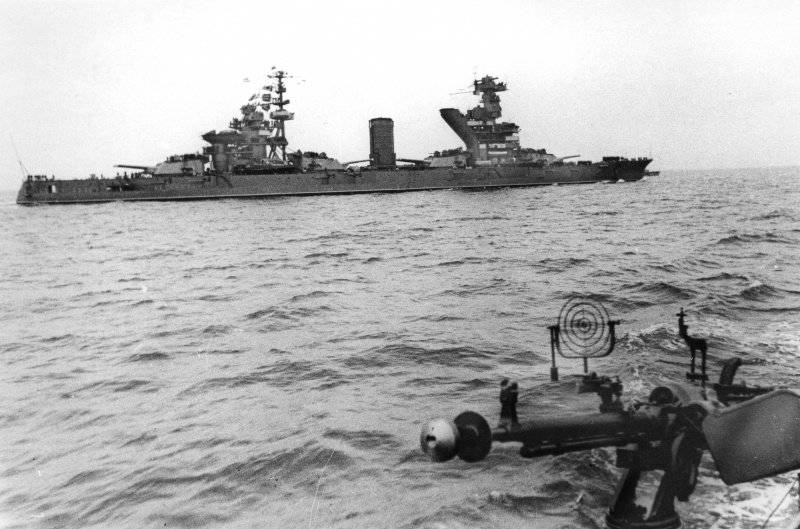
During the Great Patriotic War, our fleet received from the industry 4018 machine guns DShK. During this time, the Allies put 92 - 12,7-mm quad Vickers machine guns and 1611-12,7-mm twin Colt-Browning machine guns.
Also on the eve of the war in 1940, the 37-mm naval anti-aircraft installation 70-K, created on the basis of the automatic 37-mm anti-aircraft gun 61-K, was put into service.
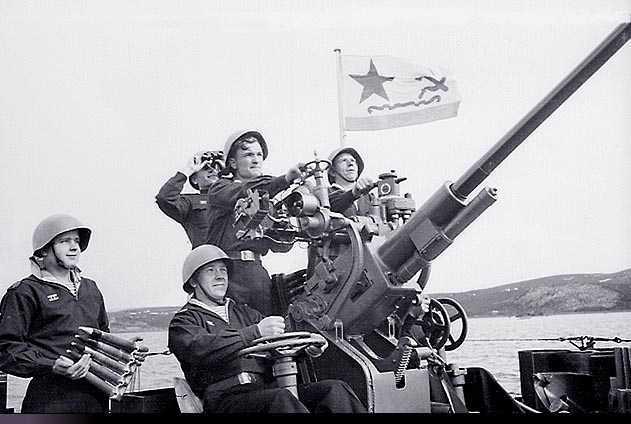
It became the main automatic weapons boats and battleships, destroyers and cruisers, the entire fleet of the war years received an 1671 artillery system.
The cooling of the 70-K was airy, which was a big disadvantage. After 100 shots, the air-cooled barrel should either be changed (which took at least 15 minutes), or wait for it to cool for about an hour. Often, enemy bombers and torpedo bombers did not provide such an opportunity. Paired 1-mm water-cooled anti-aircraft installations B-37 entered service only after the war.
In addition, for the fleet, the 45-mm caliber would have gone more (such a land installation was created and successfully tested), which would increase the effective range of anti-aircraft fire and the striking effect of the projectile.
In addition to 37-mm 70-K, the Allies supplied American and Canadian 5500-mm Bofors 40, much of which fell into the Navy.
In wartime, aviation was the main enemy of our fleet. Shortly after the outbreak of hostilities, our naval commanders came to realize that in order to repel the massive raids of enemy torpedo bombers and dive bombers, rapid-fire anti-aircraft guns with 20-25-mm caliber tape feed were needed.
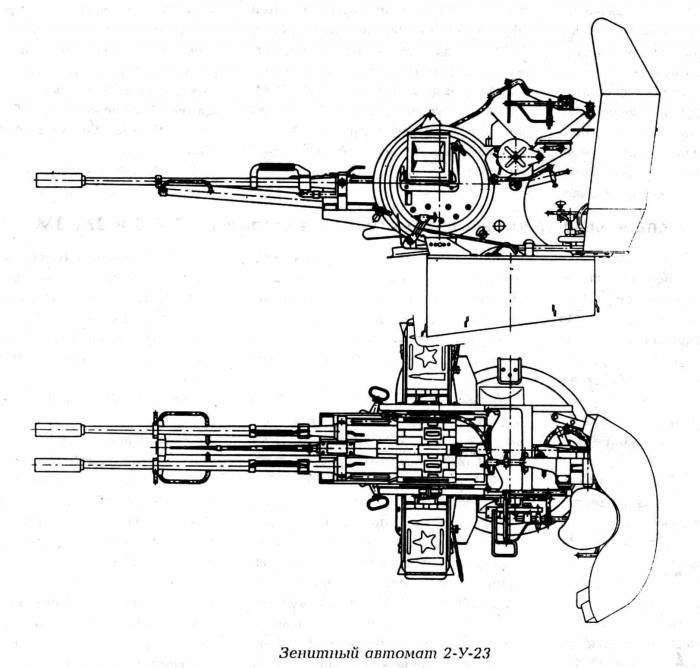
For this, attempts were made to create naval anti-aircraft guns on the basis of the ShVAK and VY air cannons, but for a number of reasons the matter did not advance further the arming of small watercrafts and boats.
25-mm units 84-KM, created on the basis of the army anti-aircraft machine 72-K, were produced in small quantities, but it also had a feed supply.
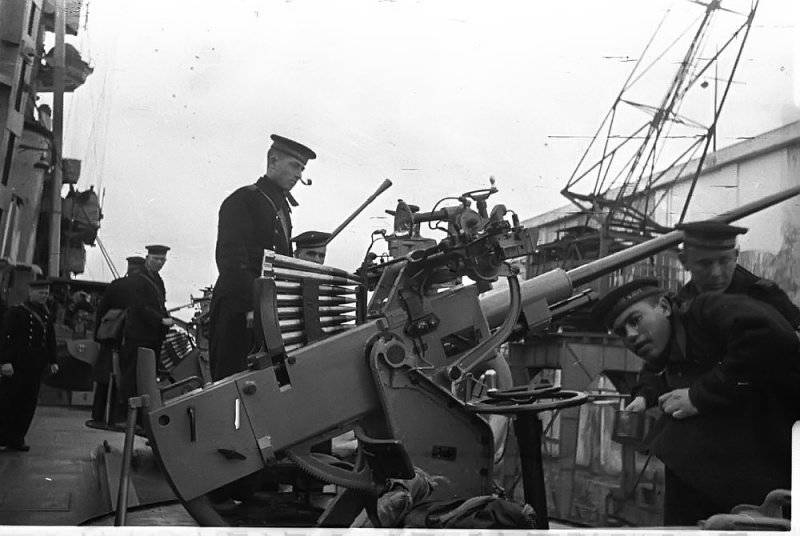
In the second half of the war, this problem was partially solved through the supply of lend-lease. In the USSR, the Allies supplied the 1993 20-mm machine gun. The Oerlikon were also part of the armament of military vessels supplied to the Navy. Most of them were used in the North and the Baltic; there were only 46 on the Black Sea theater of military operations.
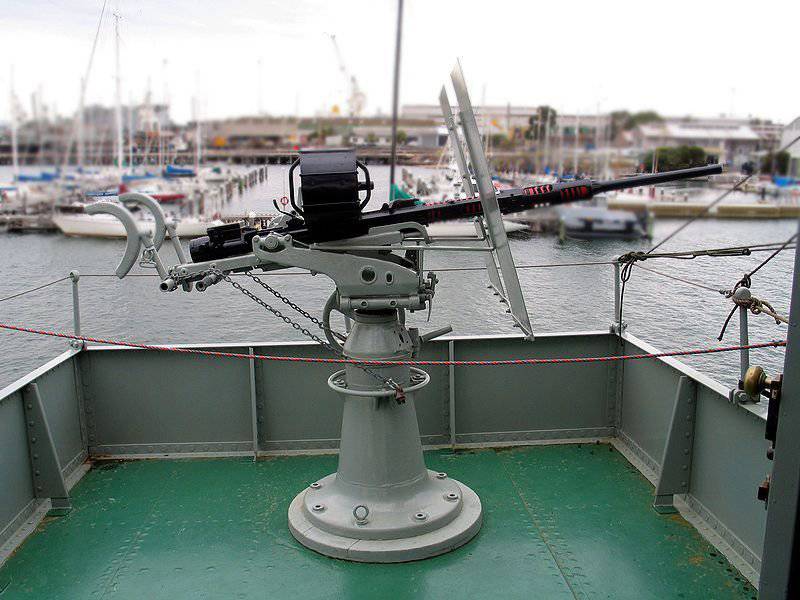
The composition of the anti-aircraft weapons of medium and large warships also included universal installations caliber 85-100-mm. Theoretically, they could also conduct anti-aircraft fire, at least the angles of elevation allowed to do so. But they were not stabilized and far from all the ships where they were installed, there were centralized anti-aircraft fire control systems, which greatly reduced their combat value.
The versatile 85-mm gun mount 90-K has replaced the 76-mm 34-K gun in production. But the wartime produced them was not much, only about 150 guns.
In the middle of the USSR 30-s for armament of Svetlana-type cruisers: Red Caucasus, Red Crimea and Chervona Ukraine purchased 10 100-mm double-barreled rifles developed by engineer General Eugenio Minizini in Italy.
The setting was carried out with the help of a manual drive, with a speed of 13 deg / s horizon and 7 deg / sec vertically. Shooting was conducted according to the PJSC. Reachable height was 8500 m. The rate of fire 10-12 rds / min.
After the death of "Chervona Ukrainy" the installations were removed and they re-armed the remaining cruisers. Installations by this time were already ineffective against modern aircraft because of low pickup speeds.
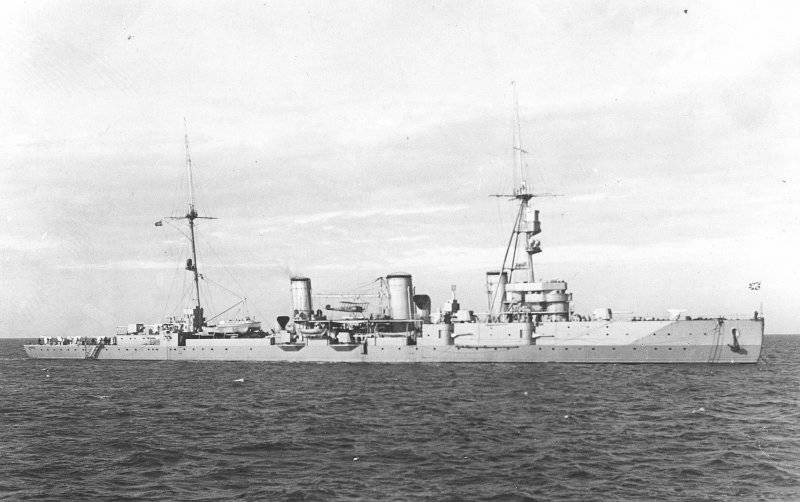
In the 1940, the X-NUMX-mm single-barrel universal installation B-100 was adopted, which was unified in terms of ammunition with the 34-mm Minizini. Before the war, the industry managed to produce 100 guns of this type.
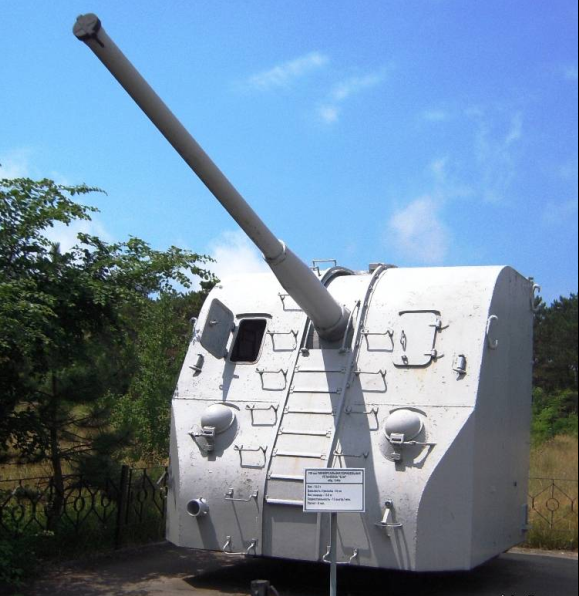
It had a barrel length 56 caliber, the initial velocity of the projectile 900 m / s, the maximum angle of elevation 85 ° and the firing range of the air targets 15000 m, the ceiling 10000 m. Rate of Fire - 12 shots / min.
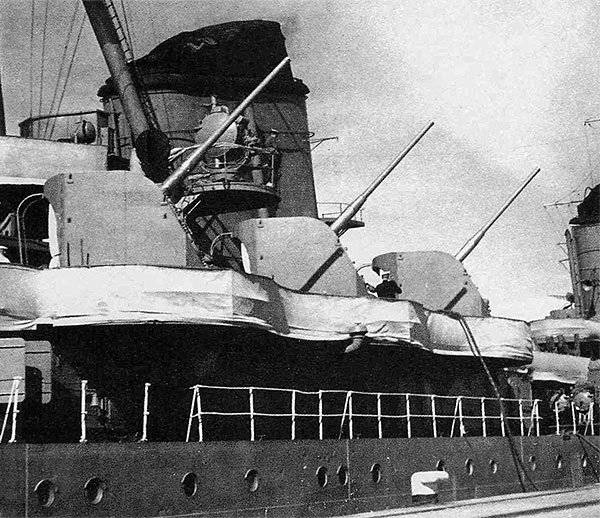
The first B-34s were installed on the 26 (Kirov) cruisers without electric drive and operated manually. In view of this, they could only conduct anti-aircraft fire.
The shooting control of the 100-mm guns was carried out by the Horizont naval artillery guns control system (MPUAZ).
A major disadvantage of all our universal 85-100-mm caliber guns was the absence of electric or electro-hydraulic drives during the war, which significantly limited the speed of fire and the possibility of centralized fire control. At the same time, universal installations of 88-127-mm caliber in other countries had such an opportunity.
The Soviet navy suffered very serious losses in the war, especially in the initial period. The biggest losses were incurred by the Red Banner Baltic Fleet - more than 130 warships and submarines, the Black Sea Fleet - near 70, SF - about 60.
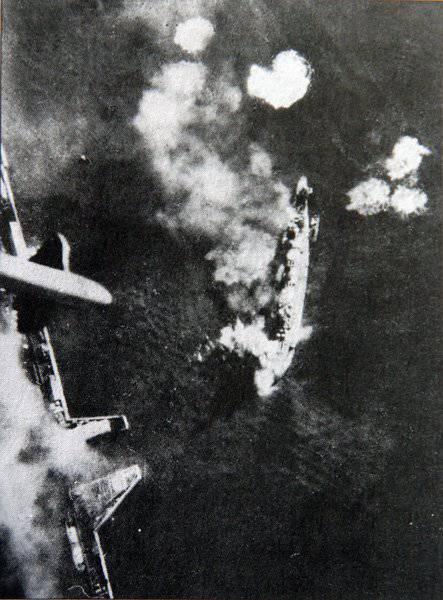
During the entire war, our battleships and cruisers had no clashes with enemy ships of a similar class. Most of the large surface ships were sunk by the Luftwaffe. Causes of losses were mainly miscalculations in the planning and weakness of anti-aircraft weapons.
Sources:
http://ruguard.ru/forum/index.php?topic=651.0;wap2
http://flot.sevastopol.info/arms/guns/70k.htm
http://militaryrussia.ru/blog/topic-95.html
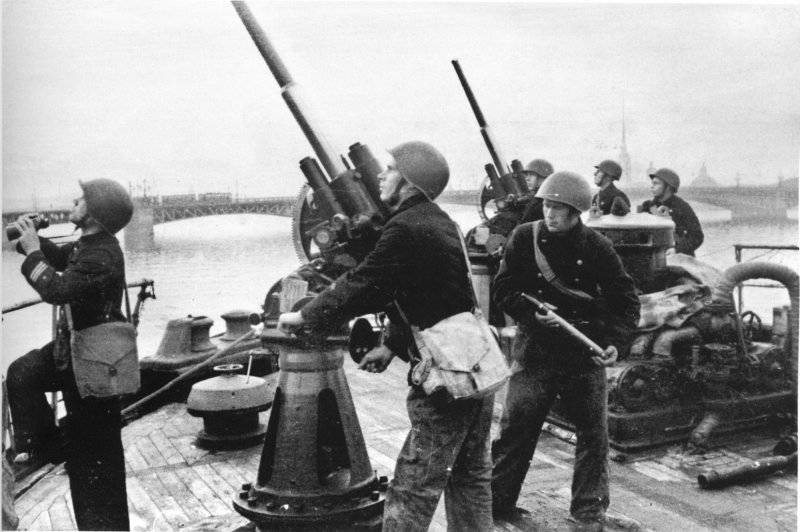
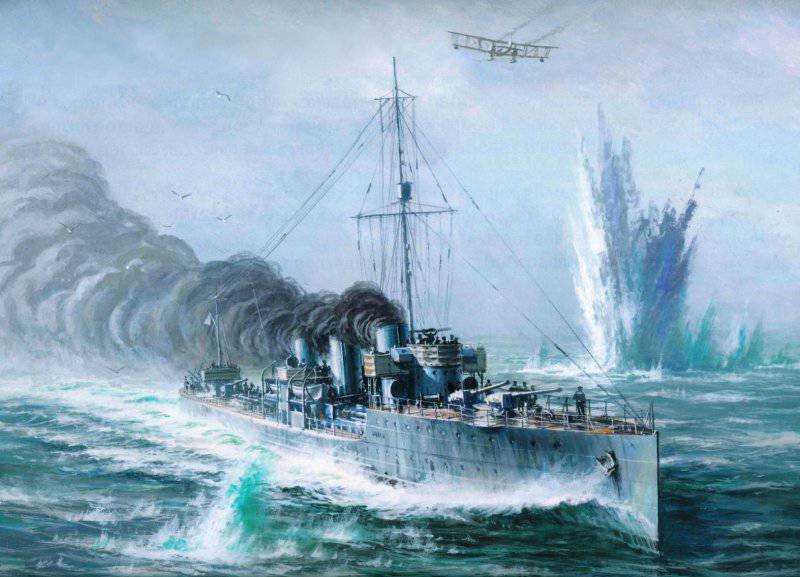
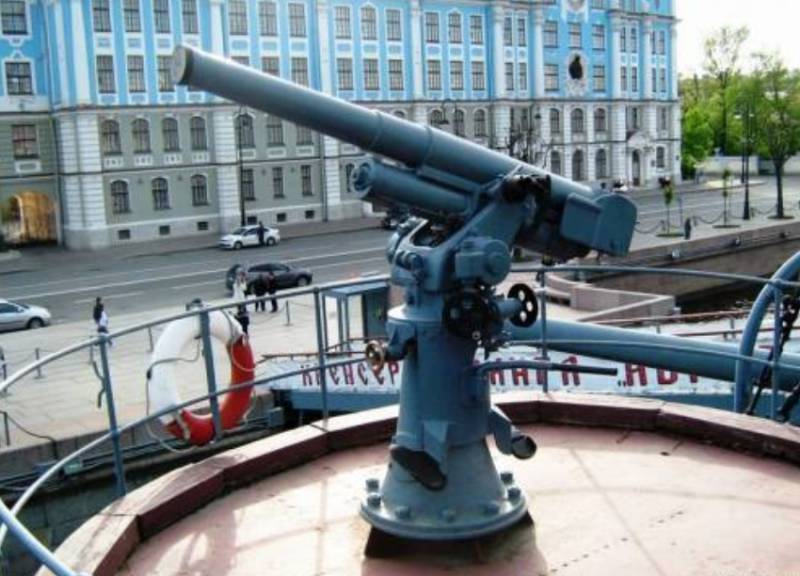
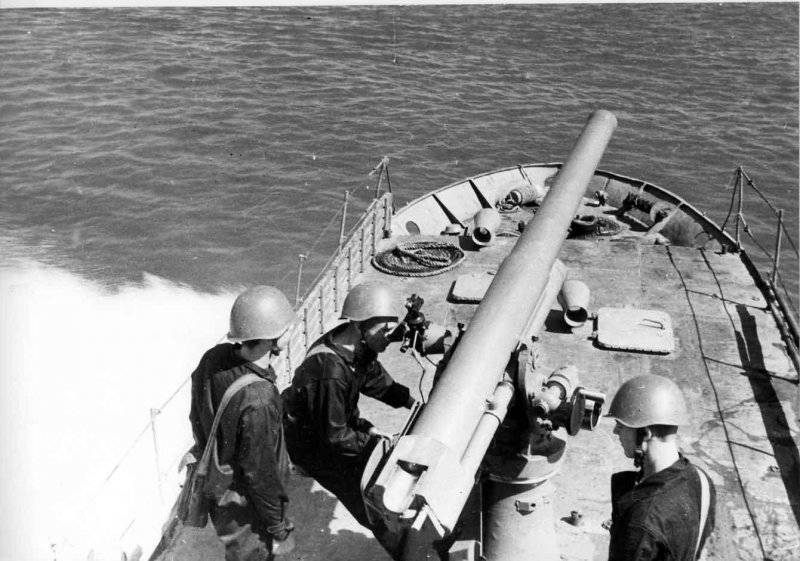
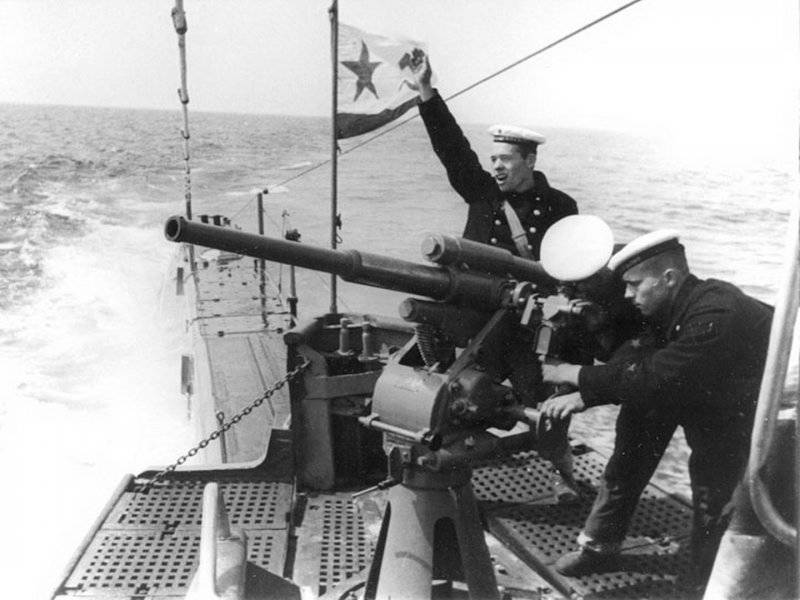
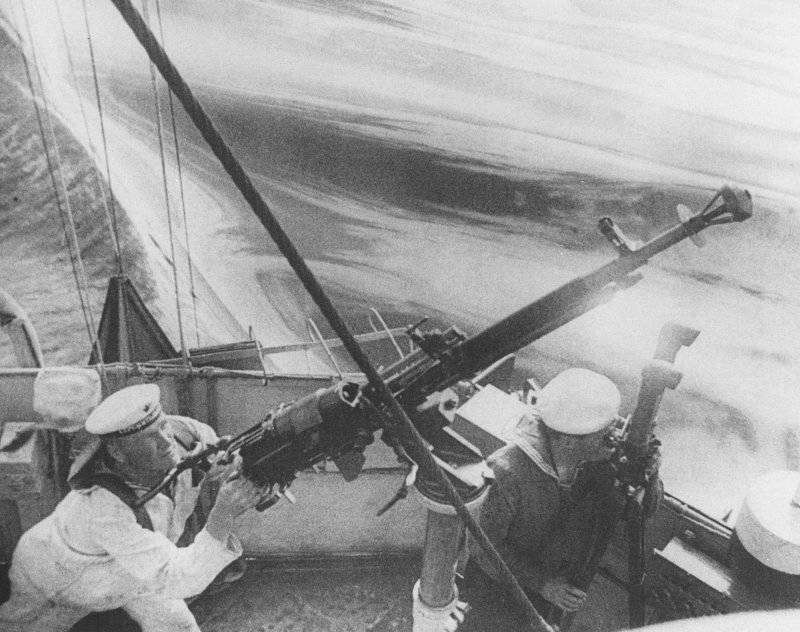
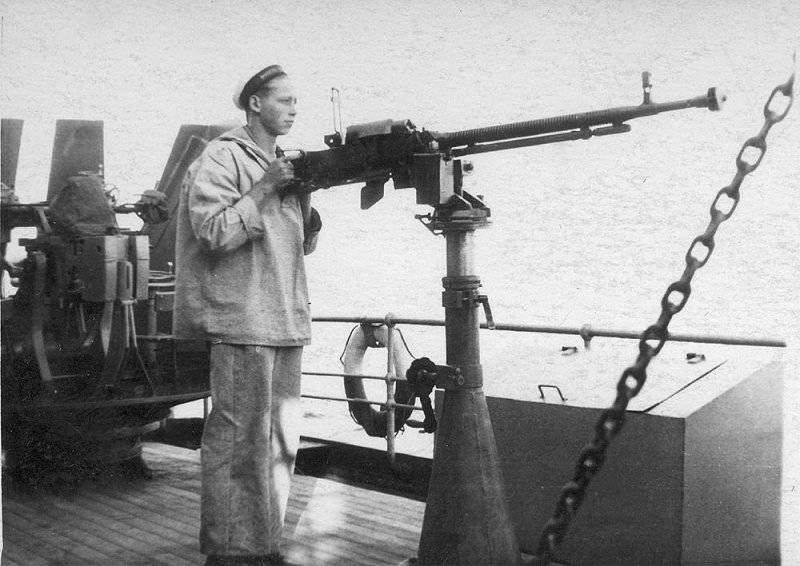
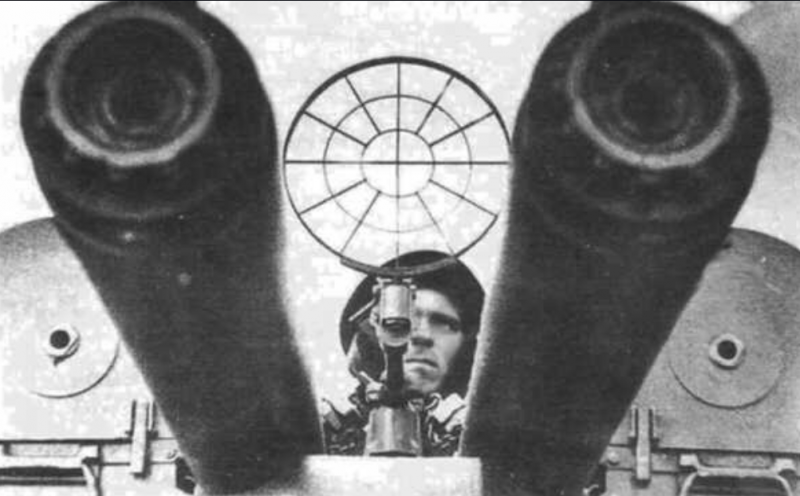
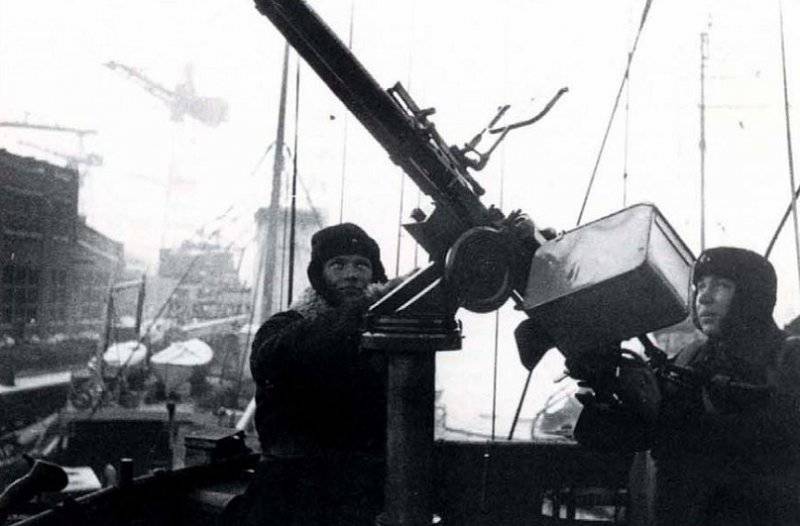
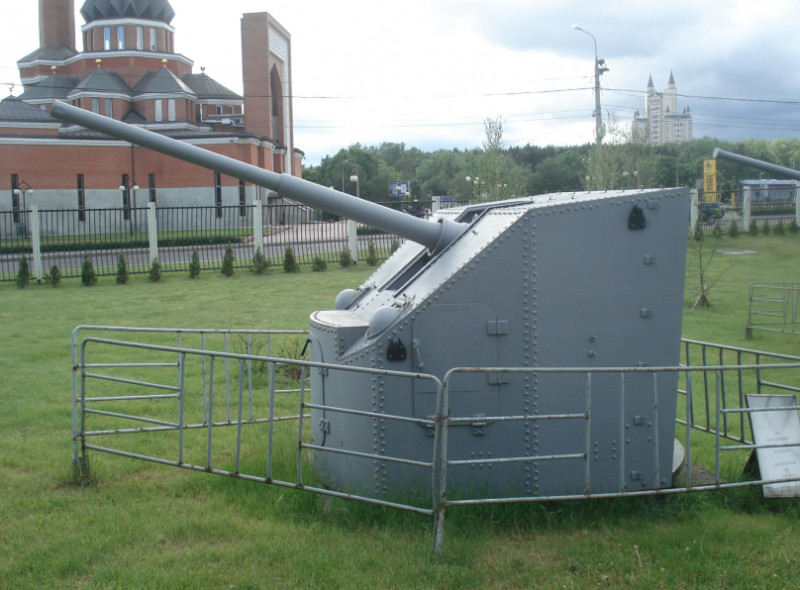
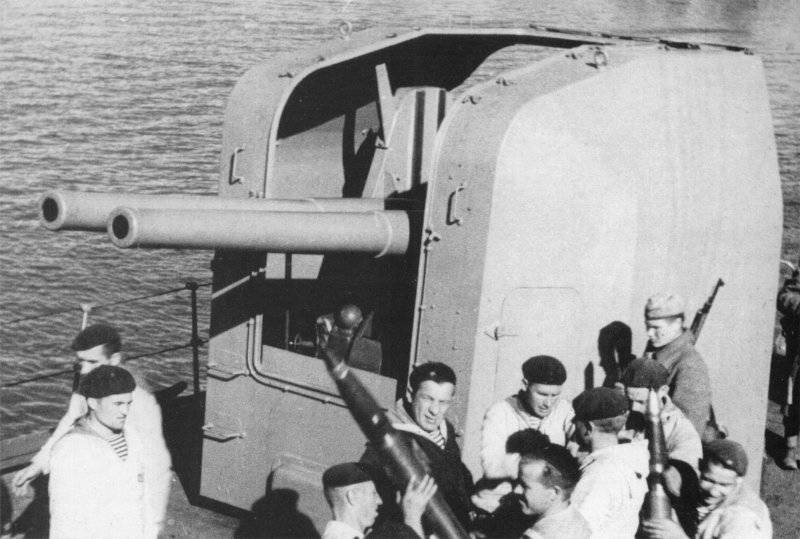
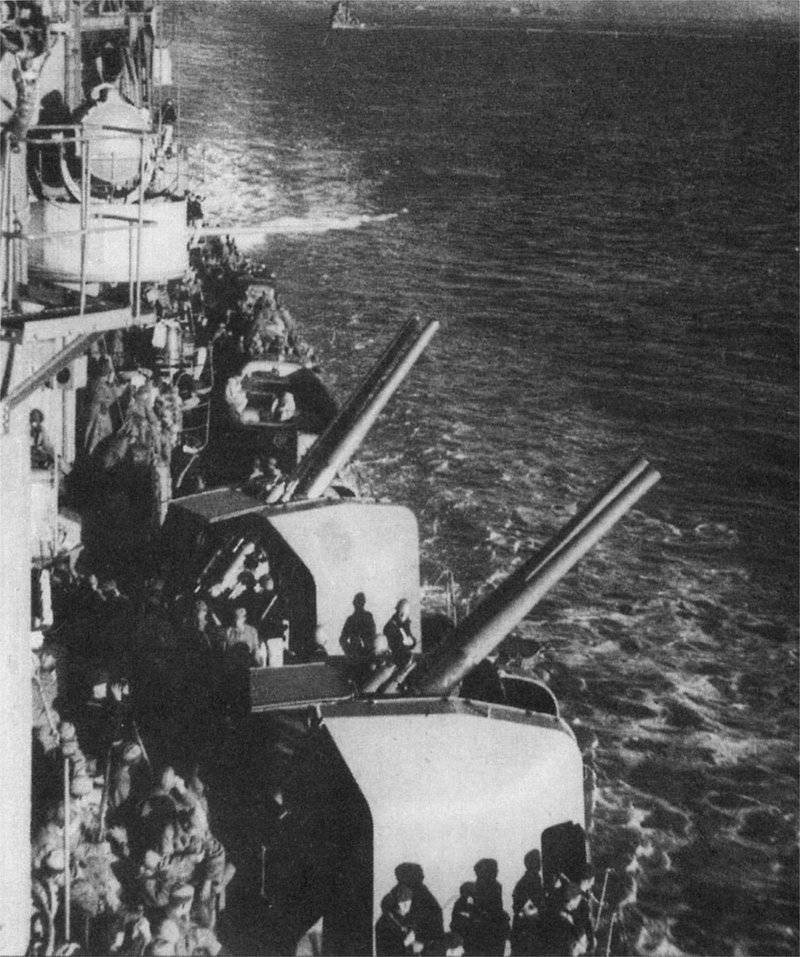
Information